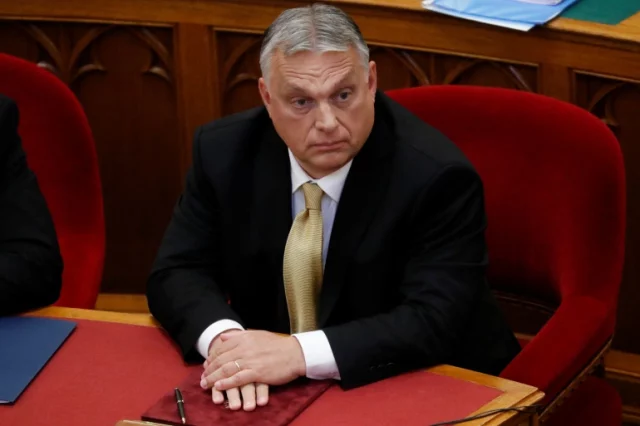
Ukraine’s Transcarpathia: The Other Center of Tension in the Heart of Europe
Publication: Eurasia Daily Monitor Volume: 19 Issue: 76
By:

In recent years, relations between Ukraine and Hungary were repeatedly overshadowed by bilateral conflicts and mutual accusations. The primary stumbling block to this day continues to be one of Ukraine’s western provinces—Transcarpathia (Zakarpatska Oblast). For example, earlier this month, the secretary of the Ukrainian National Security and Defense Council (NSDC), Oleksiy Danilov, asserted that Hungary had been warned in advance by Russia about the upcoming attack on Ukraine, and he claimed that Hungary intended to exploit the situation to reclaim “part of its [Ukrainian] territory,” alluding to Transcarpathia (Interfax, May 2).
On May 3, the Embassy of Hungary in Kyiv denied the NSDC secretary’s remarks. The Hungarian diplomatic post responded that Danilov’s allegations are “untrue and unfounded, as well as incite hatred against the Hungarian people and Hungary in Ukrainian public opinion, which is suffering from the war” (Facebook.com/HunEmbassy.Kyiv, May 3).
The essence of this conflict, cannot be properly understood without reference to its historical context and to modern-day demographic statistical data. It must be noted that ethnic Hungarians have lived in territories that now make up the Transcarpathian region of Ukraine (in Hungarian known as Kárpátalja) since the migration of Hungarian tribes to the Carpathian Basin at the turn of the 9th and 10th centuries. In Hungarian historiography, this is referred to as the “honfoglalás”—“conquest of the homeland”—and Hungarians consider this region part of their historical lands and themselves as indigenous people there (Infopost.media, April 3). One hundred fifty-seven thousand Hungarians live in Ukraine, and 152,000 of them reside in Zakarpatska Oblast. But this figure only makes up roughly 12 percent of the population of the region (2001.ukrcensus.gov.ua, accessed May 23).
Even though holding dual citizenship in Ukraine is illegal, many ethnic-Hungarian citizens of Ukraine have received Hungarian passports in recent years—though the exact numbers are difficult to calculate. An official figure was disclosed by the Hungarian government only once. Back in February 2015, Budapest revealed it had issued Hungarian passports via a simplified procedure to 94,000 Transcarpathians. It is also known that as of August 2015, Hungary received 124,000 applications for Hungarian citizenship from Ukraine (Tsn.ua, September 21, 2018). Meanwhile, Ukrainian-Hungarian relations expert Dmytro Tuzhanskyy asserts that the entire ethnic-Hungarian community in Ukraine has passports from Hungary (5.ua, October 6, 2021). It is widely known in Ukraine that many ethnic Hungarians from Transcarpathia do not know Ukrainian and predominantly speak the language of the neighboring country.
At the same time Budapest systematically invests tens of billions of Hungarian forints in the region as part of a large-scale government policy that extends not only to Transcarpathia but also to almost all countries bordering Hungary. Hungarian government grants to ethnic Hungarians of Transcarpathia cover almost all aspects of life—from education to culture to religion. During the last ten years, Transcarpathian Hungarian church parishes received more than 6.8 billion forints ($19 million) from only one such government fund. And according to Ukrainian journalists, between 2011 and 2020, Transcarpathia received almost 115 million euros ($123 million) from the Bethlen Gábor Fund. In addition to financing local educational programs and institutions, the Hungarian government subsidizes the southwestern Ukrainian region’s social and public-sector workers who speak Hungarian, including teachers, medical staff and librarians (Radio Svoboda, July 8, 2021).
The Security Service of Ukraine (SSU), in turn, periodically intensifies its activity against local and foreign funds in Transcarpathia that allegedly operate illicitly, to the detriment of Ukraine. For instance, in 2020 the SSU was investigating a case of assistance to a foreign state by some Ukrainian public figures. Ukrainian law enforcement officials seized a number of printed materials promoting so-called “Greater Hungary” and the creation of an ethnic autonomy in Transcarpathia (Ssu.gov.ua, November 30, 2020).
Hungary routinely uses its voice inside the North Atlantic Treaty Organization (NATO) as a tool of political pressure against Ukraine in the context of Transcarpathia. In an interview with the Russian state news agency TASS, Hungarian Foreign Minister Péter Szijjártó addressed a question about Ukrainian membership prospects in NATO by declaring, “Ukraine needs to undertake a range of significant changes if it is serious about Euro-Atlantic integration” (TASS, January 19, 2022). In fact, Hungary has long blocked Ukraine’s integration into the North Atlantic Alliance because of a law that requires high school classes to be conducted in the Ukrainian language (Eurointegration.com.ua, January 20).
The Ukrainian-Hungarian relationship concerning Transcarpathia is complicated to say the least. On the one hand, Hungary’s desire to support its diaspora in Ukraine and preserve local Hungarian culture and distinct identity is perfectly comprehensible. But on the other hand, Ukraine’s efforts to enhance its national security and prevent any potential separatist currents in Transcarpathia are equally clear, especially in view of the 2014 Crimean crisis. How this tense bilateral discord develops over the coming months—particularly against the background of war—remains to be seen. Yet clearly, some arbitration from the two countries’ mutual partners might be increasingly necessary to work through the deadlock.



